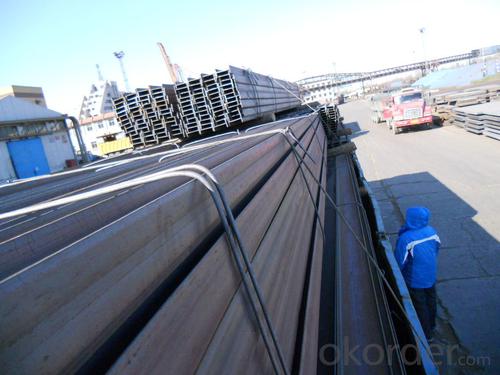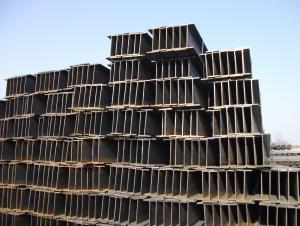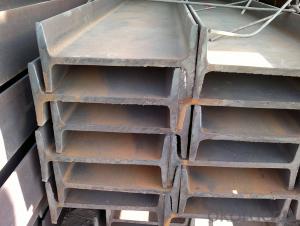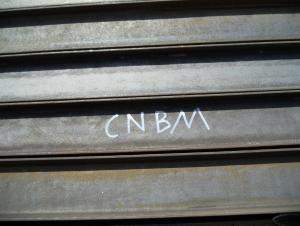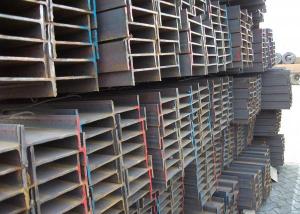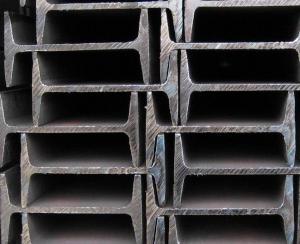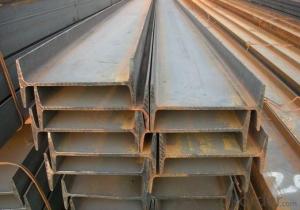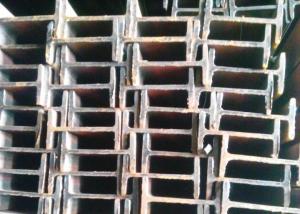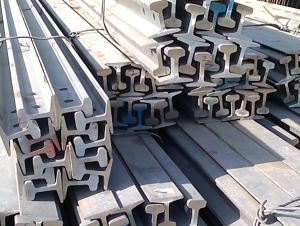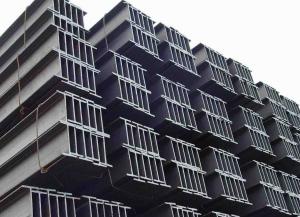I BEAM
- Loading Port:
- China Main Port
- Payment Terms:
- TT OR LC
- Min Order Qty:
- -
- Supply Capability:
- -
OKorder Service Pledge
OKorder Financial Service
You Might Also Like
Specifications of IPE/IPEAA Beam Steel
1. Product name: IPE/IPEAA Beam Steel
2. Standard: EN10025, GB Standard, ASTM, JIS etc.
3. Grade: Q235B, A36, S235JR, Q345, SS400 or other equivalent.
4. Length: 5.8M, 6M, 9M, 10M, 12M or as your requirements
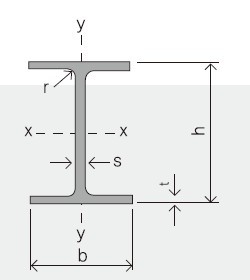
Section | Standard Sectional Dimensions(mm) | ||||
| h | b | s | t | Mass Kg/m |
IPE80 | 80 | 46 | 3.80 | 5.20 | 6.00 |
IPE100 | 100 | 55 | 4.10 | 5.70 | 8.10 |
IPE120 | 120 | 64 | 4.80 | 6.30 | 10.40 |
IPE140 | 140 | 73 | 4.70 | 6.90 | 12.90 |
IPE160 | 160 | 82 | 5.00 | 7.40 | 15.80 |
IPE180 | 180 | 91 | 5.30 | 8.00 | 18.80 |
IPE200 | 200 | 100 | 5.60 | 8.50 | 22.40 |
IPE220 | 220 | 110 | 5.90 | 9.20 | 26.20 |
IPE240 | 240 | 120 | 6.20 | 9.80 | 30.70 |
IPE270 | 270 | 135 | 6.60 | 10.20 | 36.10 |
IPEAA80 | 80 | 46 | 3.20 | 4.20 | 4.95 |
IPEAA100 | 100 | 55 | 3.60 | 4.50 | 6.72 |
IPEAA120 | 120 | 64 | 3.80 | 4.80 | 8.36 |
IPEAA140 | 140 | 73 | 3.80 | 5.20 | 10.05 |
IPEAA160 | 160 | 82 | 4.00 | 5.60 | 12.31 |
IPEAA180 | 180 | 91 | 4.30 | 6.50 | 15.40 |
IPEAA200 | 200 | 100 | 4.50 | 6.70 | 17.95 |
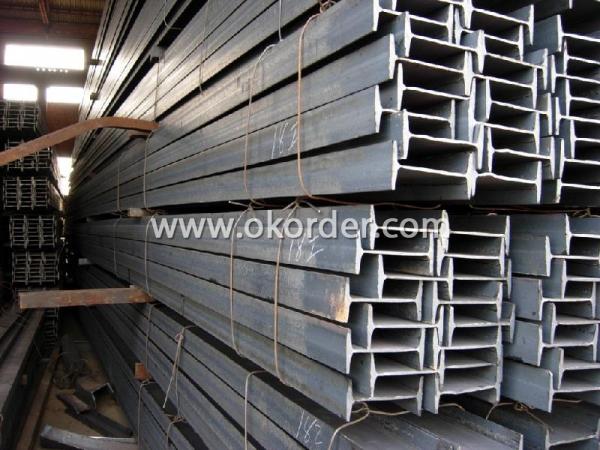
Applications of IPE/IPEAA Beam Steel
IPE/IPEAA Beam Steel are widely used in various construction structures, bridges, autos, brackets, mechanisms and so on.
Packing & Delivery Terms of IPE/IPEAA Beam Steel
1. Package: All the IPE/IPEAA Beam Steel will be tired by wire rod in bundles
2. Bundle weight: not more than 3.5MT for bulk vessel; less than 3 MT for container load
3. Marks:
Color marking: There will be color marking on both end of the bundle for the cargo delivered by bulk vessel. That makes it easily to distinguish at the destination port.
Tag mark: there will be tag mark tied up on the bundles. The information usually including supplier logo and name, product name, made in China, shipping marks and other information request by the customer.
If loading by container the marking is not needed, but we will prepare it as customer request.
4. Shipment: In containers or in bulk cargo

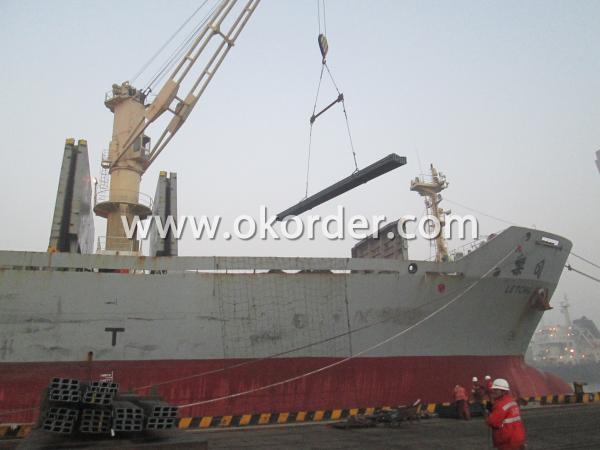
5. Delivery time: All the IPE/IPEAA Beam Steel will be at the port of the shipment within 45 days after receiving the L/C at sight ot the advance pyment.
6. Payment: L/C at sight; 30% advance payment before production, 70% before shipment by T/T, etc.
Production flow of IPE/IPEAA Beams
Material prepare (billet) —heat up—rough rolling—precision rolling—cooling—packing—storage and transportation
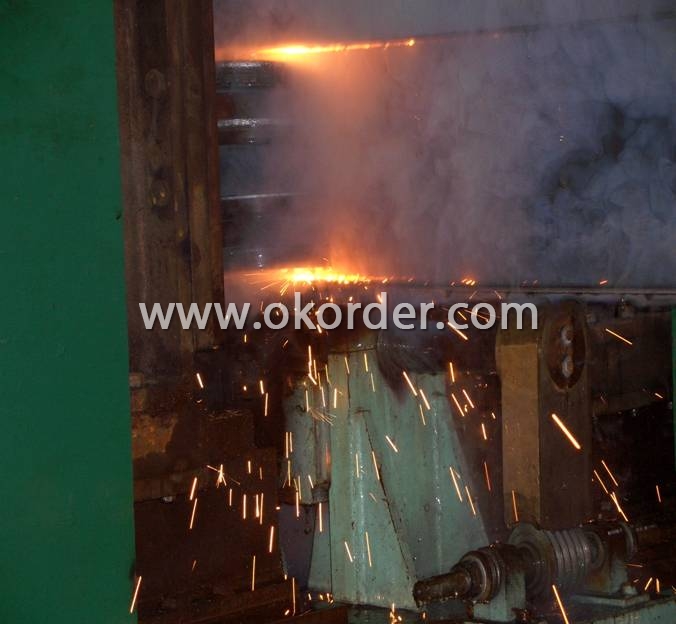
- Q: Can steel I-beams be used for airport hangar construction?
- Yes, steel I-beams can be used for airport hangar construction. Steel I-beams are commonly used in construction due to their strength and durability. They provide structural support and are able to withstand heavy loads, making them suitable for large span buildings such as airport hangars. Additionally, steel I-beams can be easily fabricated and customized to meet the specific design requirements of an airport hangar. They are also resistant to fire and corrosion, which are important considerations in hangar construction. Therefore, steel I-beams are a popular choice for constructing airport hangars due to their reliability and ability to meet the unique demands of such structures.
- Q: Which bearing capacity is big, I-beam or H?
- When H steel has large bearing capacity and the same bearing capacity, H steel needs to be saved more than I-beam
- Q: Can steel I-beams be used in earthquake-resistant buildings?
- Yes, steel I-beams can be used in earthquake-resistant buildings. Steel is a strong and ductile material that can withstand the forces and vibrations caused by earthquakes. I-beams provide structural stability and flexibility, allowing them to absorb and dissipate seismic energy. Additionally, steel's inherent properties, such as its high strength-to-weight ratio and ability to be prefabricated, make it an ideal choice for earthquake-resistant construction.
- Q: How do you mark the types of steel such as channel, I-beam and so on in the document?
- In the document mark "channel", "I-beam" and other steel symbols, the input method of small keyboard, right-click the Greek character mother.
- Q: What are the considerations for steel I-beam design in corrosive environments?
- Several crucial considerations must be taken into account when designing steel I-beams for corrosive environments to ensure the longevity and safety of the structure. Firstly, the selection of the appropriate steel type is critical. Stainless steel, particularly grades like 316 or duplex stainless steel, is often the preferred choice due to its high corrosion resistance. These alloys contain additional elements such as chromium and molybdenum, which provide superior protection against corrosion compared to standard carbon steel. Applying suitable coatings or surface treatments can further enhance the corrosion resistance of steel I-beams. Common options include hot-dip galvanizing, which involves immersing the steel in molten zinc, or epoxy coatings. These protective layers act as a barrier between the steel surface and corrosive agents. Understanding the specific corrosive environment is crucial in the design of steel I-beams. Factors such as temperature, humidity, chemical exposure, and the presence of pollutants should be considered. For instance, marine environments with saltwater require additional protection measures due to their high corrosiveness. Regular maintenance and inspection are essential to identify and address any signs of corrosion in steel I-beams. This includes monitoring the condition of coatings, promptly repairing any damaged areas, and ensuring proper drainage to prevent water accumulation. The structural design of steel I-beams should consider the potential impacts of corrosion. This may involve increasing the section dimensions to compensate for anticipated material loss due to corrosion. Additionally, designs should incorporate adequate ventilation to minimize moisture accumulation and promote drying. It is also important to consider the compatibility of the steel with adjacent materials used in the structure. The use of dissimilar metals in contact with steel can lead to galvanic corrosion. Proper insulation or the use of compatible materials can help prevent this type of corrosion. In conclusion, the design of steel I-beams for corrosive environments necessitates careful consideration of material selection, coatings or surface treatments, environmental factors, maintenance, inspection, structural design, and compatibility with adjacent materials. By addressing these considerations, engineers can ensure the durability and integrity of steel I-beams in corrosive environments.
- Q: Can steel I-beams be used for elevated walkways or bridges?
- Yes, steel I-beams can be used for elevated walkways or bridges. Steel I-beams are commonly used in construction due to their strength and structural integrity. They are designed to bear heavy loads and provide stability, making them ideal for applications such as walkways or bridges. The I-beam shape allows for greater weight distribution and resistance to bending or buckling. Additionally, steel is a durable material that can withstand harsh weather conditions and requires minimal maintenance. Therefore, steel I-beams are a popular choice for constructing elevated walkways or bridges, ensuring the safety and reliability of these structures.
- Q: Can steel I-beams be used in renovation projects?
- Yes, steel I-beams can be used in renovation projects. Steel I-beams are commonly used in construction and renovation projects due to their strength and durability. They are often used as load-bearing supports to reinforce existing structures or to create new openings in walls or floors. Steel I-beams can be installed to carry heavy loads and provide structural stability, making them ideal for various renovation applications such as adding additional floors, expanding room sizes, or supporting a new roof. Additionally, steel I-beams are versatile and can be customized to fit specific project requirements, making them a popular choice in renovation projects where structural integrity is crucial.
- Q: How do steel I-beams compare to reinforced concrete beams in terms of cost and performance?
- When it comes to cost and performance, steel I-beams and reinforced concrete beams each have their own advantages and disadvantages. In terms of cost, steel I-beams generally have a higher upfront expense compared to reinforced concrete beams. This is due to the higher cost of steel fabrication and installation, which includes factors like labor, transportation, and specialized equipment. On the other hand, reinforced concrete beams are typically more cost-effective initially because the materials used are relatively inexpensive and easily accessible. However, it is important to consider that the long-term maintenance and repair costs for reinforced concrete beams can be higher. Concrete may require regular inspections and potential repairs due to cracks or deterioration. In terms of performance, both steel I-beams and reinforced concrete beams have their own strengths. Steel I-beams are known for their high tensile strength, allowing them to withstand heavy loads and provide excellent structural support. They also offer more flexibility and can be easily modified or adjusted if necessary. On the other hand, reinforced concrete beams are known for their durability, fire resistance, and ability to withstand extreme weather conditions. They have good compressive strength and can handle high loads as well, but their tensile strength is relatively lower. Ultimately, the choice between steel I-beams and reinforced concrete beams depends on various factors, such as the specific project requirements, design considerations, budget constraints, and local building codes. It is crucial to consult with structural engineers and professionals to determine the most cost-effective and performance-oriented solution for a particular construction project.
- Q: Can steel I-beams be used in residential renovations or additions?
- Yes, steel I-beams can be used in residential renovations or additions. They are commonly used in construction projects to provide structural support and are particularly beneficial when spanning long distances or supporting heavy loads. Steel I-beams offer strength, durability, and versatility, making them suitable for various residential applications such as creating open floor plans, removing load-bearing walls, or adding additional stories to existing homes.
- Q: What is the influence of steel column on column?
- But the structure of bearing system of bare concrete column is not to wear steel door type, the problem is at the support beam of the local stress without good dispersion over; the node not only confined encryption, but was cut off steel stirrups.
Send your message to us
I BEAM
- Loading Port:
- China Main Port
- Payment Terms:
- TT OR LC
- Min Order Qty:
- -
- Supply Capability:
- -
OKorder Service Pledge
OKorder Financial Service
Similar products
Hot products
Hot Searches
Related keywords



